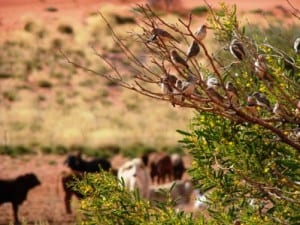Cane toads ate my baby
By Jack Ashby, on 28 April 2011
A delayed account of zoological fieldwork in Australia – Part 13
From April 2010 I spent about five months undertaking several zoological field projects across Australia. I worked with government agencies, universities and NGOs on conservation and ecology studies ranging from Tasmanian devil facial tumour disease, the effect of fire, rain and introduced predators on desert ecology and how to poison cats. This series of blog posts is a delayed account of my time in the field.
Weeks Sixteen to Nineteen – part 2
Last week I described how we went about trapping small fauna at the Australian Wildlife Conservancy’s Wongalara sanctuary in the Northern Territory’s Top End. This week I want to talk about cane toads and some of the other feral beasts around. (more…)
 Close
Close



